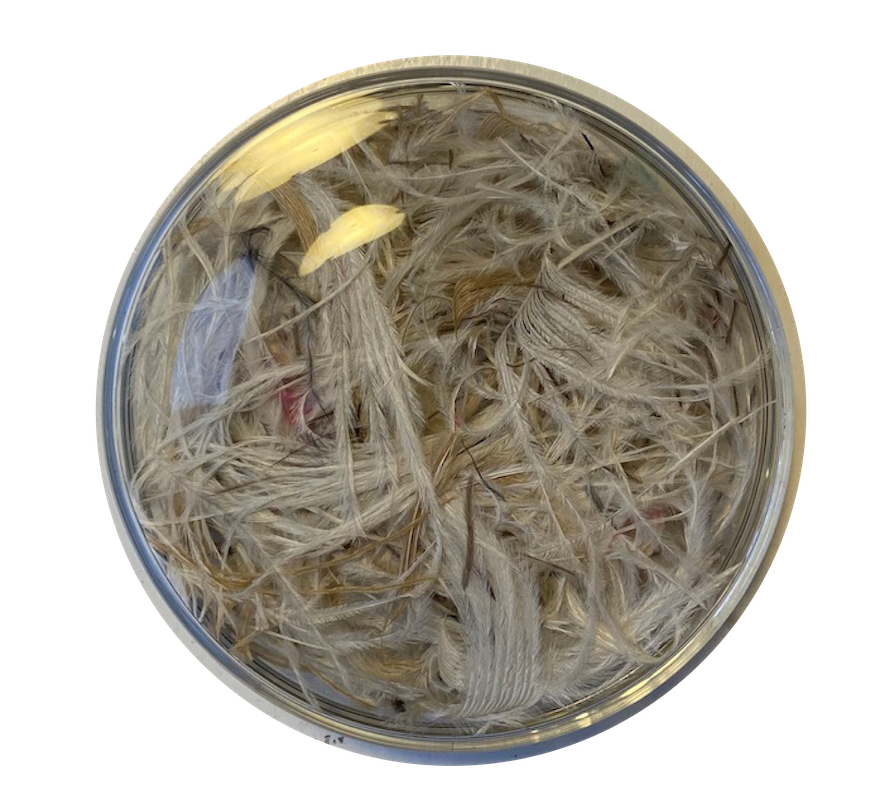FEATHER WASTE : SECOND LIFE & NEW TEXTURES¶
RESEARCH & INSPIRATION¶
Given the large amount of feather waste that is obtained during processing, I decided to give them a new 'life' and find a new way to reuse these scraps, which in clothing terms are hardly reusable. I therefore thought that they could become the subject of bioplastic customisation. My aim is therefore to be able to enrich new textures and surfaces with these scraps, using different types of feathers in the shape and experimenting with colour with different treatments. Considering that the client who supplies them to me does not use natural dyes, it will be very interesting to see how the feathers react to natural dyes and, why not, also to bacterial dyes.
For the FEATHER WASTE section I will create samples in different manipulation techniques:
- NEW CUSTOMISED SURFACES WITH COLOURED FEATHERS
- DYED FEATHERS IN DIFFERENT COLOURS & TECHNIQUES (natural dyes/bacterial dyes)
- Geometric interweaving with feather ribs in bio-plastic
HOW TO TREAT WASTE¶
I took the feather waste from one of my clients who make embroidery dress/ accessories with the feathers.
The client is GaleottiPiume, at this linkyou can find some informatios about their works and how thei treats feathers.
As you can see i have different waste of feathers. Depends about which kind of feather you are going to use. The feathers I will use are ostrich, marabout and goose mainly. These animals are not killed to get their feathers, mainly for food reasons, and feather waste is obtained from them. It is not in the same way a good reason to kill them I think, but in any case it is fair to make it clear that they are not killed for aesthetic reasons but for food.
Feather waste can be different, depending on the type of animal from which you get it. For example, from ostrich you can get the middle part of the feather and thus the rib. See the image on the right below. This is the most difficult part to use because it is very stiff, but I will try to make something :). The part of the scrap that is used most is then what is cut from the rib and therefore the soft part, see different kind of waste in the picture below.

This is for the ostrich, which is the first type I am experimenting with. Below you will also find information on the other scraps I am going to use.

For dyeing I am going to do several tests. Feathers follow the same dyeing process as wool and silk because they are animal fibres. So they do not need mordants. To dye feathers, they usually put them in vinegar before doing the colour bath (but not with naturai colours) unlike what I am going to do. So I will perform several tests below on how best to dye feathers.
What I did to prepare my feathers for dyeing is:
- remove the waste ribs of the feather from the paper, during cutting, they are secured with a thread to a strip of paper.
- wash the ribs and soft feather waste in soapy water according to different tests I have followed different processes which you will find below.
DYEING TECHNIQUES¶
Dyeing with liquid food colour¶
This type of dyeing is very simple, just put the feather in a bowl with food colour. I have done several trials with colours, but what you have to do is leave the feathers inside the liquid for a while.
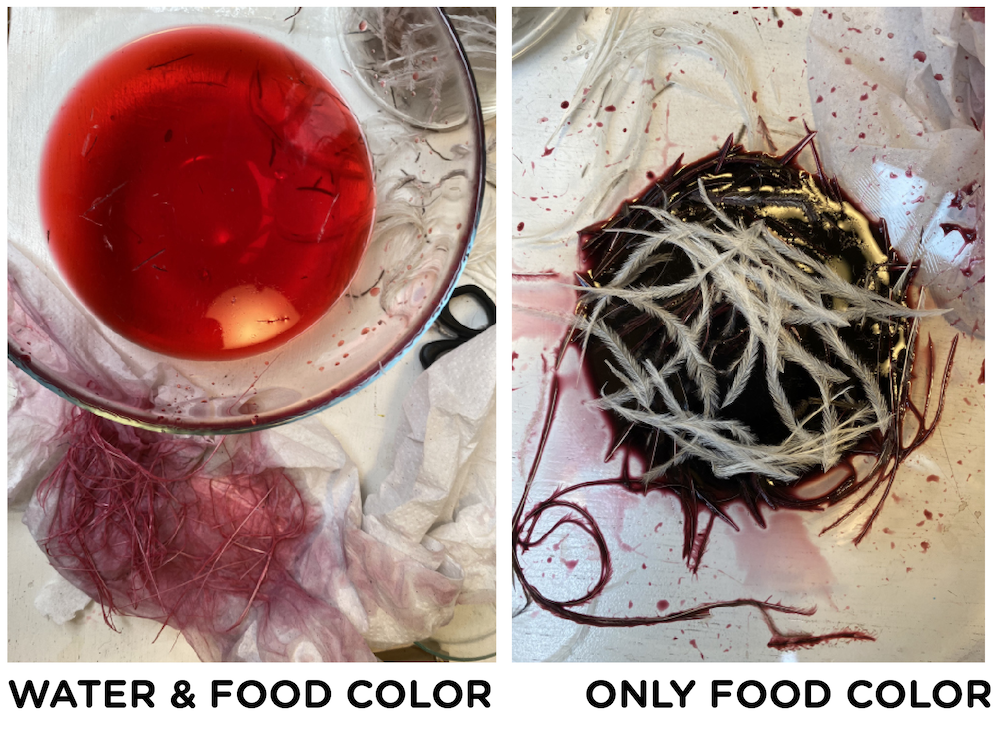

Dyeing with natural batch : Madder color¶
INSERIRE SPIEGAZIONE TINTURA
Color experiments¶
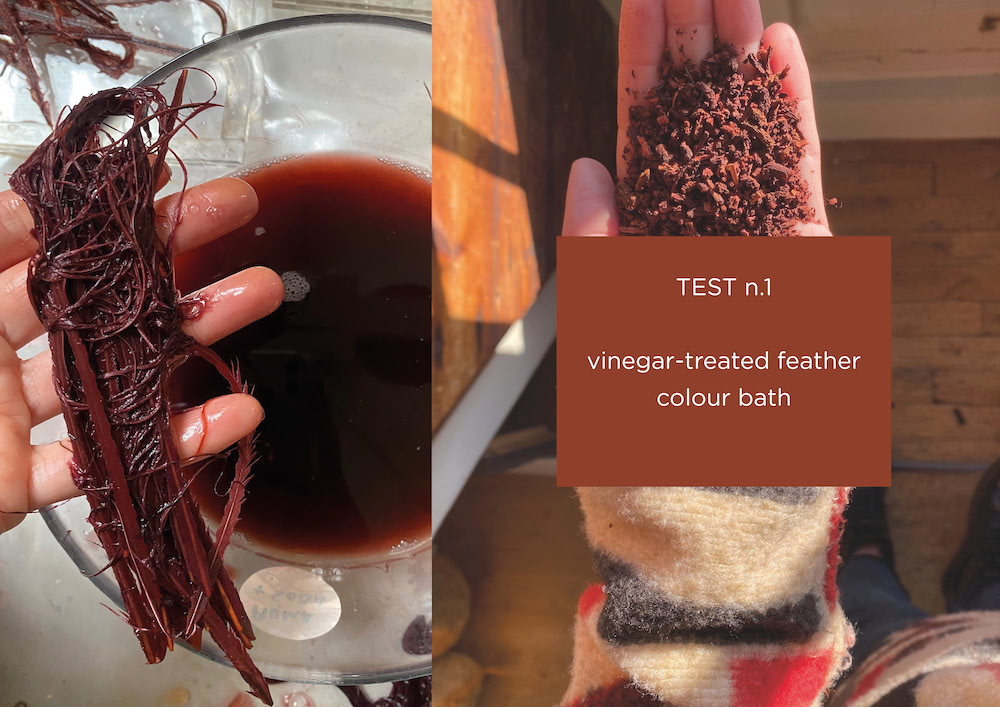
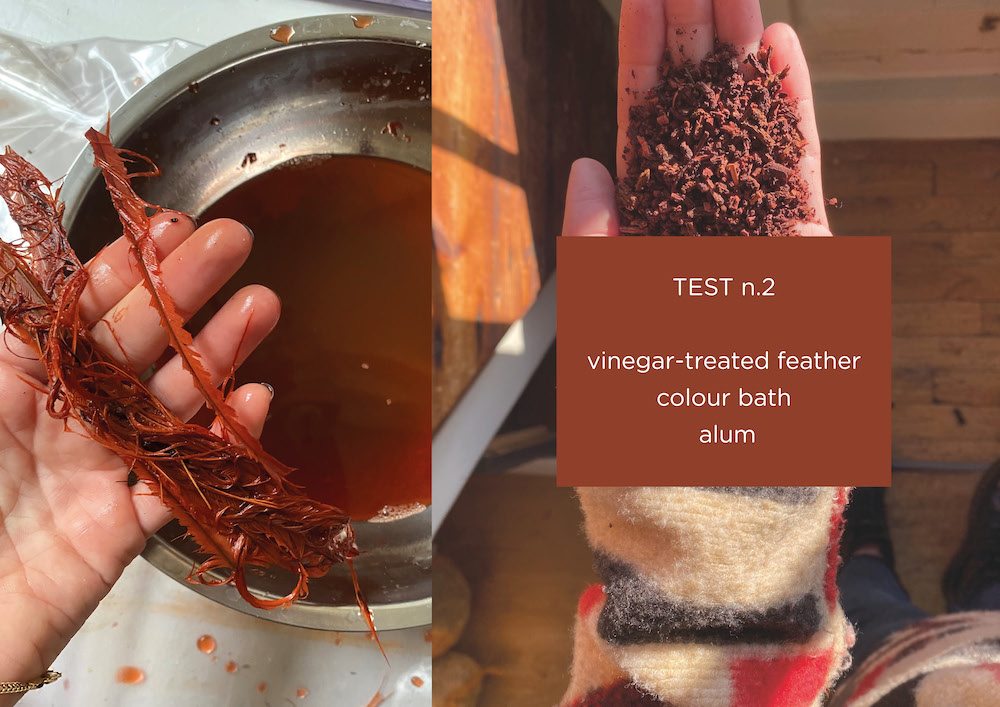



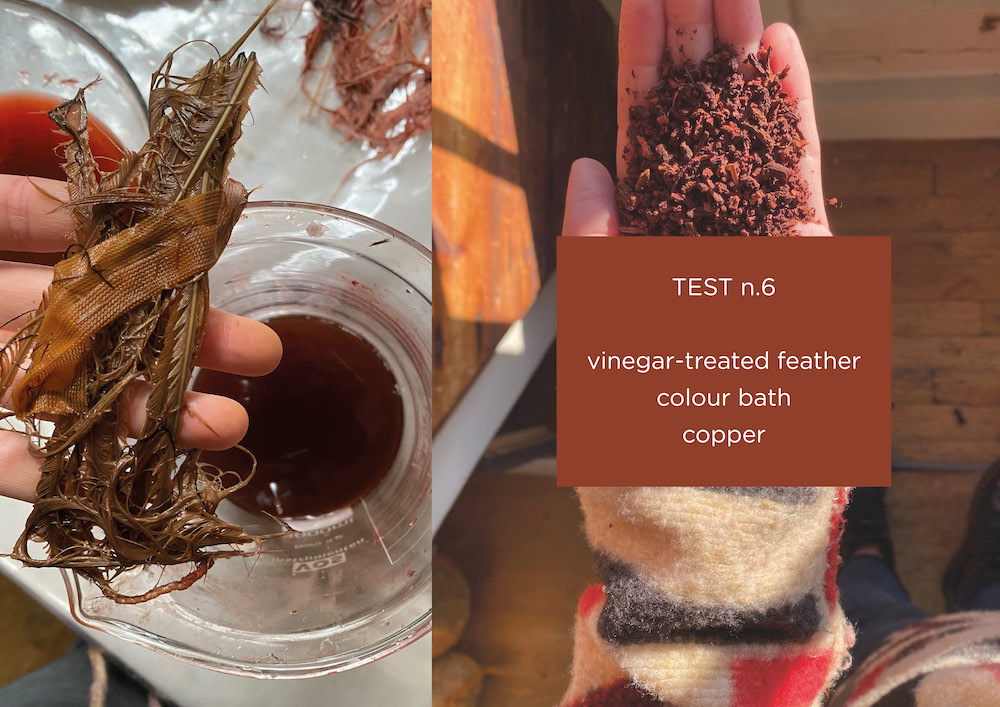
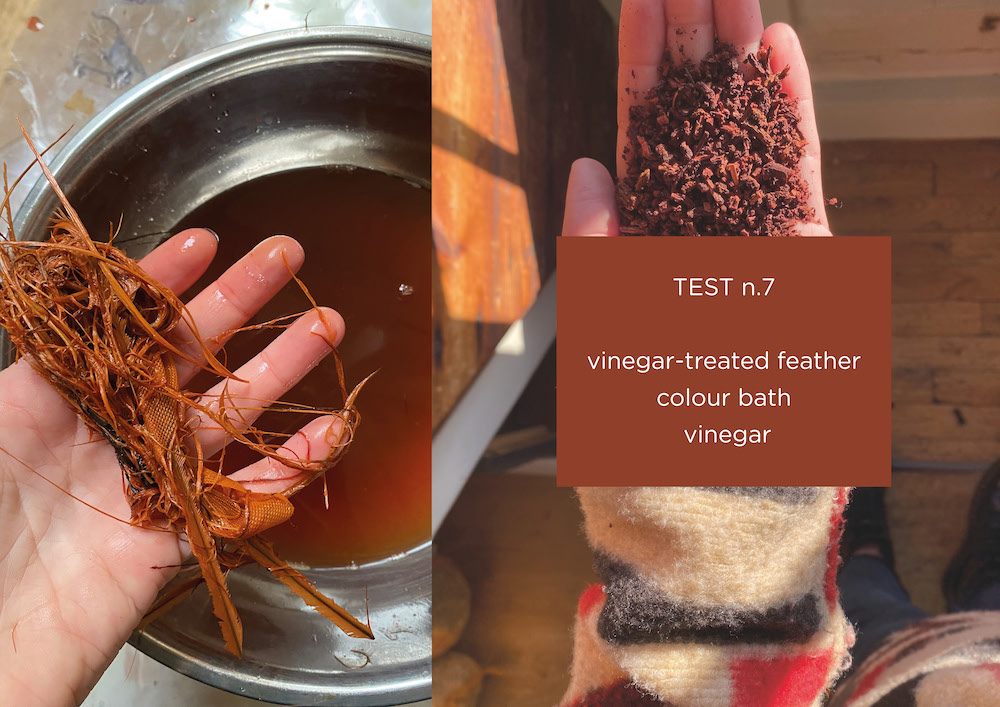
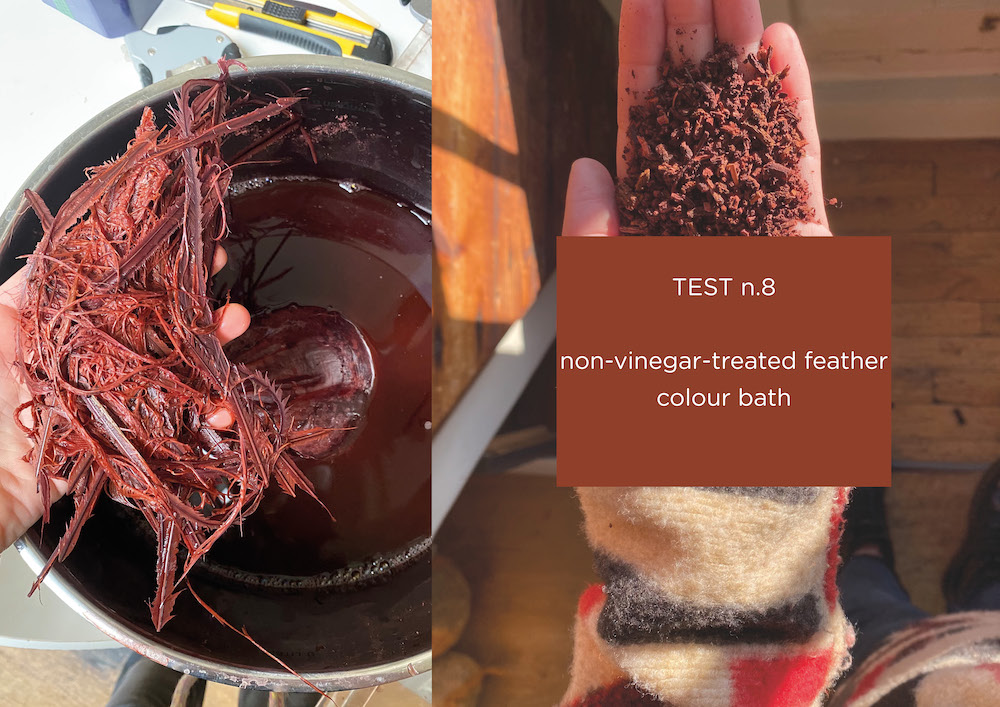
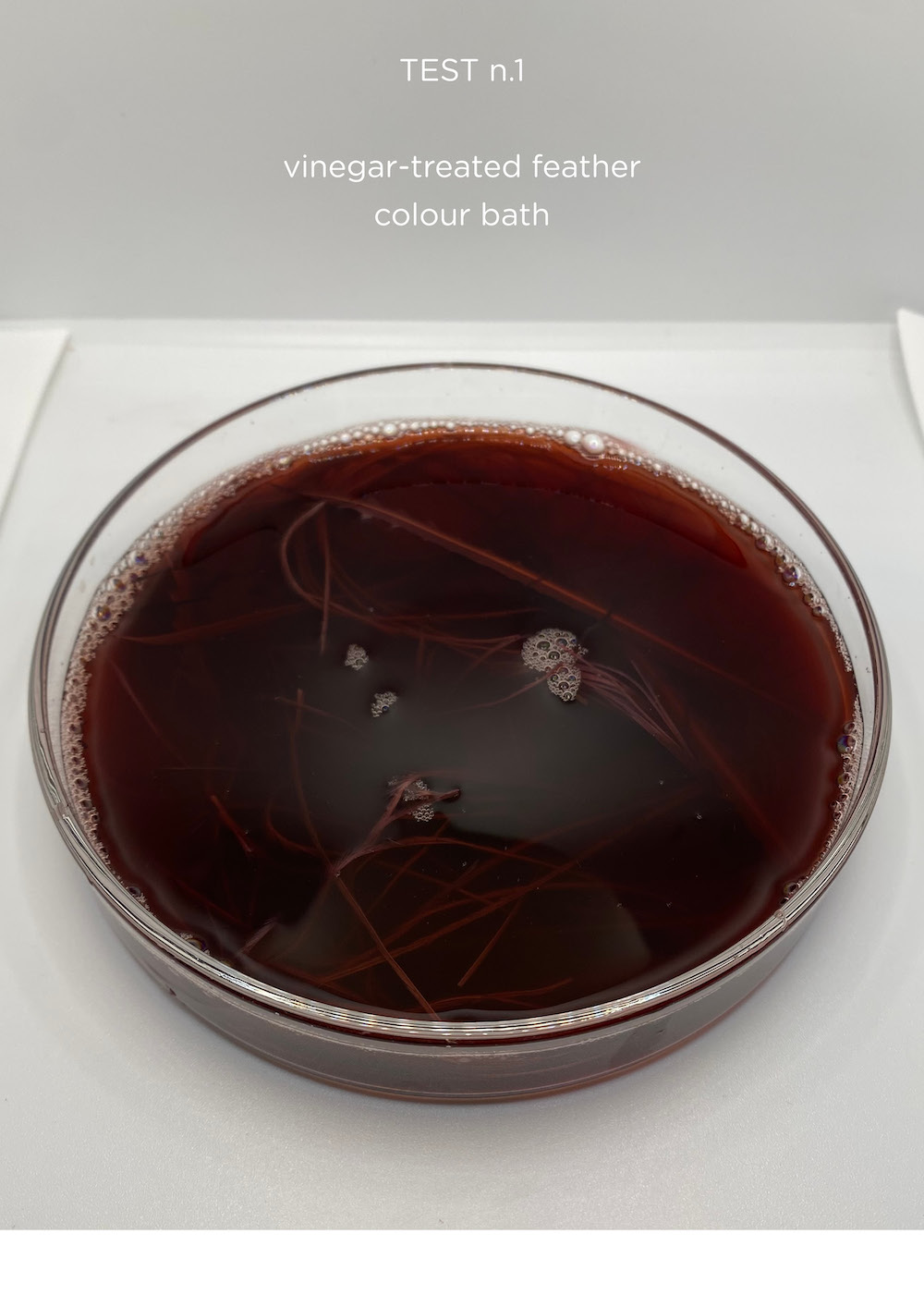


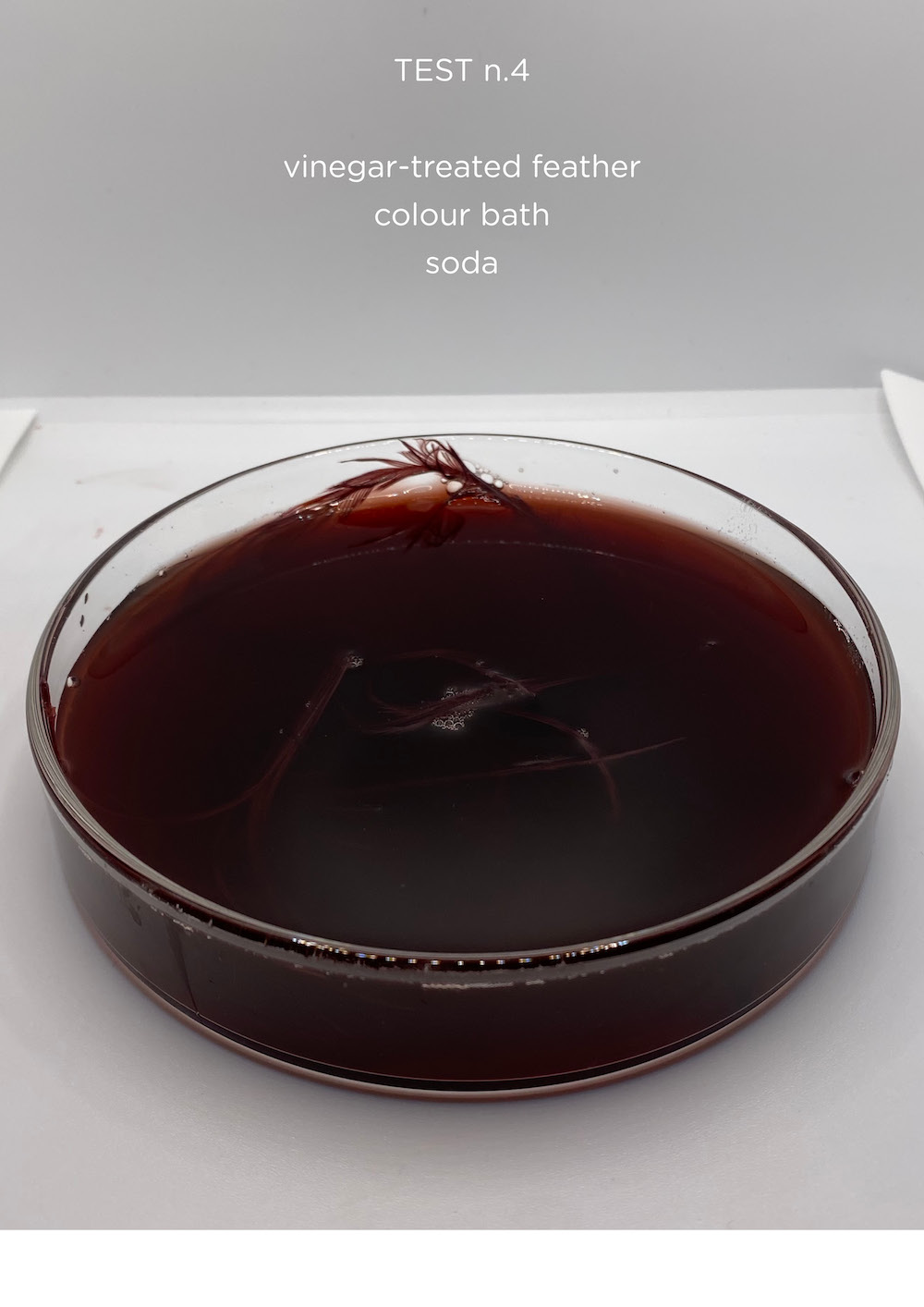


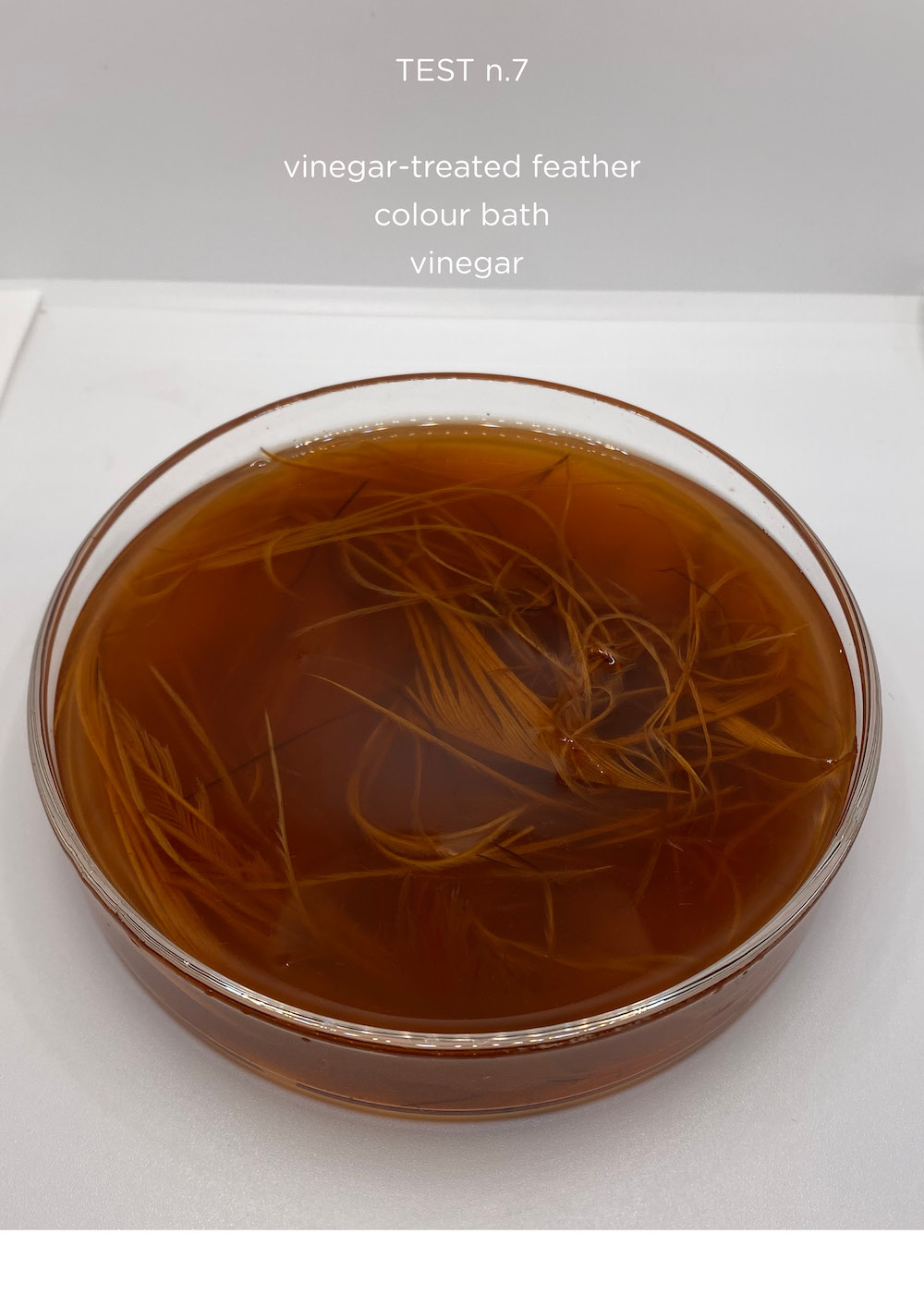



Dyeing with bacteria¶
FEATHER STERILISATION
